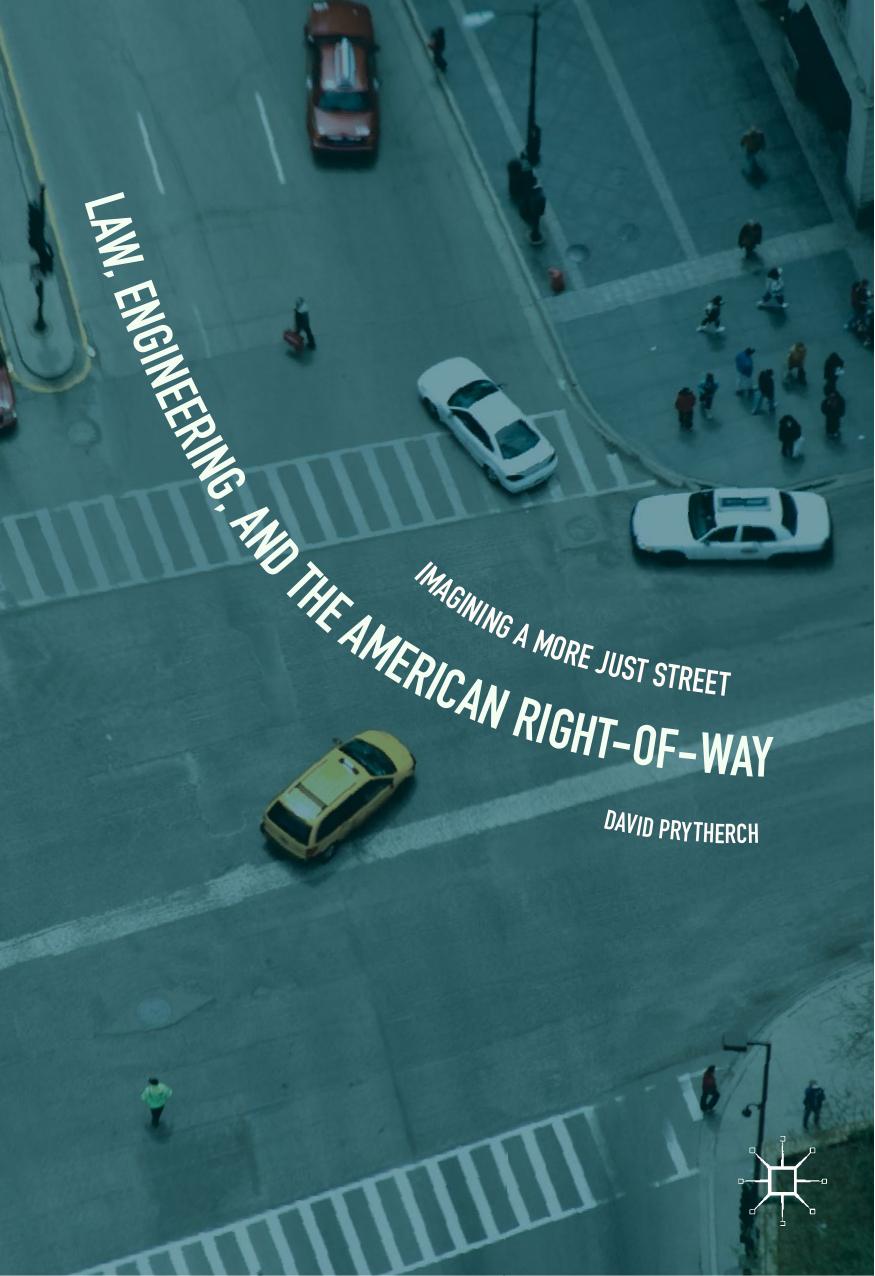Law, Engineering, and the American Right-of-Way by David Prytherch

Author:David Prytherch
Language: eng
Format: epub, pdf
Publisher: Springer International Publishing, Cham
Roadway Engineering and Rights and Justice on the Street
Like traffic law, roadway engineering emerged in the twentieth century to both promote a new order among the mobile and physically redesign the street for changing uses. Streets had always been governed by laws and subject to engineering, but the introduction of the automobile prompted a more systematic redesign of the roadway and social and physical space for vehicular travel. The emergence and ultimate hegemony of traffic engineers over the public space of the street, while unsurprising given the challenges posed by car traffic, nonetheless reveals changing thinking and politics of mobility. Indeed, the remaking of the street from public space for diverse uses to vehicular thoroughfare required rethinking not only traffic law, but also what (and who) streets should be designed for. Today these assumptions are manifest in the engineering manuals that powerfully shape roadway design.
If mobility is a question of rights—in the sense of both having legal rights conceptually and the ability to exercise them practically—then roadway design matters enormously to the ability of individuals to enjoy their right to the city street. Socially conscious engineering would recognize both the societal dimensions and physical aspects of movement, understanding the roadway to be place as well as thoroughfare, and providing full access for diverse people to share in the public sphere and design process (including development and application of engineering standards). And such engineering would promote mobility justice by producing physical streets that fairly distribute rights and burdens of mobility, maximizing access for all while reducing inequity, enhancing the capacities of the mobile, especially the most vulnerable among us, while promoting more sustainable transportation that recognizes the needs of future generations.
Unfortunately, while the street is a social space, traffic engineering imagines the street primarily as physical conduit for vehicular flow, addressing itself squarely to the physics of movement while largely neglecting their social implications. And where it engages social values, these are interpreted narrowly in terms of operational convenience. But if engineering affects a stance of technical detachment and value neutrality, it is central to shaping social relations among the mobile, and rights and justice among them. How just is the engineered street? Unfortunately, not only do AASHTO standards reflect and operationalize the inequities codified by traffic law, but its geometric design and capacity analysis reinforce and in many ways extend them. As traffic laws define the roadway for the purposes of vehicular travel, AASHTO’s geometric design guidelines are explicitly “intended to provide operational efficiency, comfort, safety, and convenience for the motorist” (AASHTO 2011, p. xlii, emphasis added). And while AASHTO standards follow the law in recognizing the diversity of roadway users, developing design parameters for them, the Green Book overwhelmingly imagines and designs the street as space for vehicular mobility. The operational and spatial wants of drivers—speed and free flow—are made central guiding principles of how roads are hierarchically ordered, designed, and street spaces allocated in cross section. The 3D geometry of street spaces is so thoroughly designed around the
Download
Law, Engineering, and the American Right-of-Way by David Prytherch.pdf
This site does not store any files on its server. We only index and link to content provided by other sites. Please contact the content providers to delete copyright contents if any and email us, we'll remove relevant links or contents immediately.
The Secret History by Donna Tartt(16627)
The Social Justice Warrior Handbook by Lisa De Pasquale(11489)
Thirteen Reasons Why by Jay Asher(7788)
This Is How You Lose Her by Junot Diaz(5774)
Weapons of Math Destruction by Cathy O'Neil(5037)
Zero to One by Peter Thiel(4824)
The Myth of the Strong Leader by Archie Brown(4789)
Promise Me, Dad by Joe Biden(4449)
Beartown by Fredrik Backman(4419)
Stone's Rules by Roger Stone(4416)
How Democracies Die by Steven Levitsky & Daniel Ziblatt(4399)
The Fire Next Time by James Baldwin(4343)
100 Deadly Skills by Clint Emerson(4079)
A Higher Loyalty: Truth, Lies, and Leadership by James Comey(4033)
Rise and Kill First by Ronen Bergman(4012)
The David Icke Guide to the Global Conspiracy (and how to end it) by David Icke(3883)
The Farm by Tom Rob Smith(3872)
Secrecy World by Jake Bernstein(3783)
The Doomsday Machine by Daniel Ellsberg(3731)
